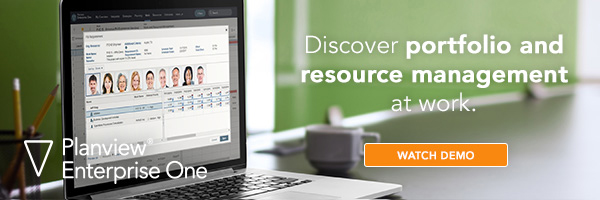
So far in this blog series, we have defined strategy, covered the basis of strategic planning, and discussed who to include in your strategic planning team. If you need a refresher on the first two phases of this rescue mission, read through parts 1 and 2 below:
While the strategic plan can feed annual plans to ensure enough of the annual budget is set aside for strategy, the real value comes into creating a continuous planning process that creates strategic agility to ultimately drive faster delivery of success. Why is this important?
Well, annual planning is required to get the budget, but there is no need to spend the time that is spent on it today. A strategic plan allows you to feed the annual plan (rather than detailed projects feeding the annual plan–that will change).
Let the ongoing strategic plan feed a continuous planning process that allows you to measure progress against metrics, consider capacity constraints, and continually make prioritization decisions using the most current information. This turns your current time-consuming process into one that enable the organization to easily respond to change along the way. So, in developing your organization’s strategic plan, let’s walk through some simple steps to add in these other two elements.
Step 1: Start with strategy
Detailed in the first two blogs of this series, the vision is set beginning with strategy, defining the metrics to measure success. For a refresher, strategy is the heart of your organization, made up of everything it wants to be. However, it is filled with unknowns and can be quite overwhelming. The first step requires you to take strategy, something that is very large, and break it down into a plan that’s actionable (the team you assembled in part two can help in this process). Once you have created this strategic plan, you’ll be better able to move into step 2.
Step 2: Bring in the annual plan
Begin to reduce the pain of annual planning by shifting from bottom-up to a top-down plan. While this is controlled by finance, you can have influence by leveraging continuous planning to improve the measurement of how funding was spent and the value obtained from it throughout the annual cycle. It may take some time to convince them, but if you embrace a continuous funding cycle, they will listen. Finance is about financial control. You will have finance on your side if you can:
- Provide actual investment spent to measured metrics;
- Provide forecasts for incremental investment for upcoming funding; and
- Create a continuous funding cycle that shows you are delivering faster and shortening delivery cycles.
Continuous planning can be tough to implement, but not if you have a proper strategic planning solution. Having everything in one place will not only improve your ability to effectively create a continuous plan and respond to changes throughout the year, but will also enable your organization to better educate each department on strategic goals and how strategic planning can benefit them, specifically. Once you’ve tied the strategic plan to the annual plan, you will have improved allocation of funding to strategy, departmental understanding of strategic goals, and alignment of each departments’ needs to the plan, making it easier for finance to measure actuals.
Step 3: Incorporate capacity planning
The final step is to tie in your capacity plan. This is the plan that allocates resources, as opposed to finances, to strategy, and often involves resources that span across the organization. Due to its breadth, additional operations and priorities throughout the organization are often impacted, making it all the more crucial to tie it to strategic planning. Account for resource allocation and utilization in the strategic plan—using the proper strategic planning solution, as opposed to spreadsheets and disparate systems, will help make this process seamless.
Why is all of this so important?
Strategic planning provides you the ability to reforecast throughout the year, monitor progress, and make adjustments as needed. This provides valuable information to the leadership team from a finance and a strategic perspective. It enables you to begin to change behavior in the organization to put strategy first and deliver more often, creating agility. It creates an opportunity for innovation and the ability to take on the “hard stuff.” It also creates the ability to focus on change management and operationalization of activities from a project management perspective, while pushing the decisions and daily execution to teams. For many organizations, the ability to simply measure and track the plan throughout the year is huge, especially if up until now they’ve been relying on spreadsheets.
Think of what it will mean to the bottom line if you are able to achieve more interactions with customers faster. And with each iteration and interaction, you collect valuable information to feed the next release and create a better customer experience, resulting in more customers and improved customer relationships. That is using digital to impact the bottom line!
Not convinced that strategic planning will push you ahead of the competition? Read ahead for part 4 of this series, where I will explain exactly why organizations are so bad at strategic planning (all the more reason why yours should be so good at it). For now, be sure to download the whitepaper, “The Four Key Elements of a Strategic Plan,” and register for a free demo of Planview’s strategic planning solution.






